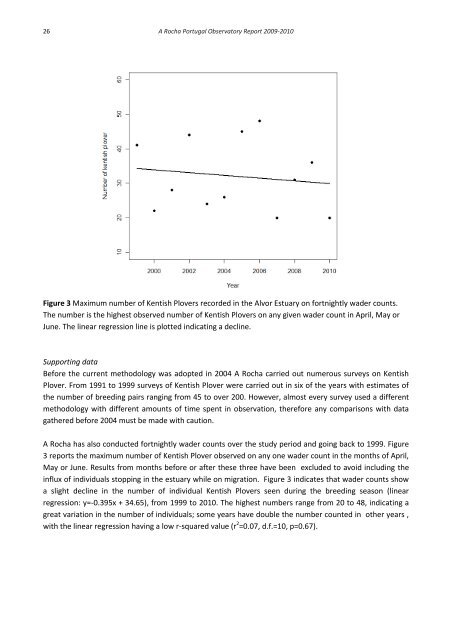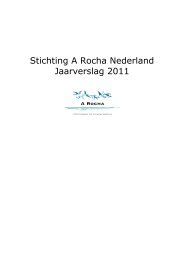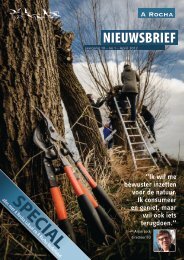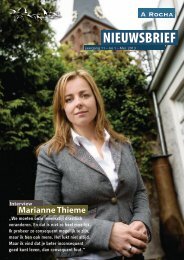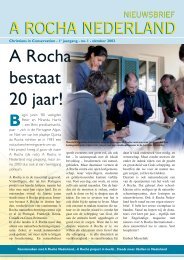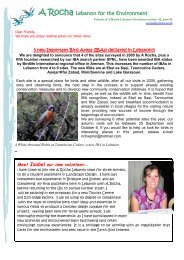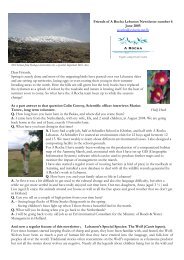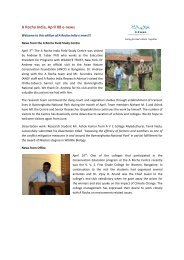A Rocha Portugal Observatory Report 2009-2010
A Rocha Portugal Observatory Report 2009-2010
A Rocha Portugal Observatory Report 2009-2010
Create successful ePaper yourself
Turn your PDF publications into a flip-book with our unique Google optimized e-Paper software.
26 A <strong>Rocha</strong> <strong>Portugal</strong> <strong>Observatory</strong> <strong>Report</strong> <strong>2009</strong>-<strong>2010</strong><br />
Figure 3 Maximum number of Kentish Plovers recorded in the Alvor Estuary on fortnightly wader counts.<br />
The number is the highest observed number of Kentish Plovers on any given wader count in April, May or<br />
June. The linear regression line is plotted indicating a decline.<br />
Supporting data<br />
Before the current methodology was adopted in 2004 A <strong>Rocha</strong> carried out numerous surveys on Kentish<br />
Plover. From 1991 to 1999 surveys of Kentish Plover were carried out in six of the years with estimates of<br />
the number of breeding pairs ranging from 45 to over 200. However, almost every survey used a different<br />
methodology with different amounts of time spent in observation, therefore any comparisons with data<br />
gathered before 2004 must be made with caution.<br />
A <strong>Rocha</strong> has also conducted fortnightly wader counts over the study period and going back to 1999. Figure<br />
3 reports the maximum number of Kentish Plover observed on any one wader count in the months of April,<br />
May or June. Results from months before or after these three have been excluded to avoid including the<br />
influx of individuals stopping in the estuary while on migration. Figure 3 indicates that wader counts show<br />
a slight decline in the number of individual Kentish Plovers seen during the breeding season (linear<br />
regression: y=-0.395x + 34.65), from 1999 to <strong>2010</strong>. The highest numbers range from 20 to 48, indicating a<br />
great variation in the number of individuals; some years have double the number counted in other years ,<br />
with the linear regression having a low r-squared value (r 2 =0.07, d.f.=10, p=0.67).


